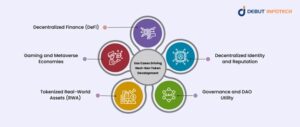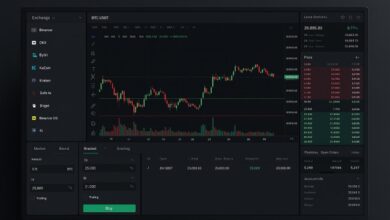The Future of Token Development in Web3 Ecosystems

Token development is at the core of Web3 ecosystems. These digital assets are not just a medium of exchange—they are the building blocks of the decentralized infrastructure, the governance, and the user incentives. Web3 applications are maturing, and as such, tokens are becoming more and more complex, as you can see in decentralized finance, digital identity, NFTs, and permissionless protocols.
Interest in Web3 is exploding globally. According to a global survey conducted by Consensys in 2024, 93% of respondents are familiar with cryptocurrencies, demonstrating a substantial increase in public awareness of digital assets. Meanwhile, developer activity is still booming. Over 21,300 monthly active developers contributed to Web3 open-source projects in 2023, representing both an active and dedicated technical community.
This shows the growth of an ecosystem where token design, functionality, and utility will matter toward innovative and sustainable Web3.
In this piece, we will examine the changes t. expect in token development and highlight some key areas where innovation and strategic design are impacting the future of Web3 and decentralized systems.
Evolution of Token Standards
1. From ERC-20 and ERC-721 to Newer Standards
The foundational ERC-20 standard defined fungible tokens, while ERC-721 introduced non-fungible assets. Today, we’re seeing a shift toward hybrid and advanced standards. ERC-1155 supports both fungible and non-fungible tokens in a single contract, enabling efficiency in gaming and collectibles. ERC-6551 introduces token-bound accounts, unlocking new levels of asset programmability.
2. Cross-Chain Standards and Interoperability
- Token development is now addressing the challenges of fragmented ecosystems. Standards like Cosmos’ IBC (Inter-Blockchain Communication) and cross-chain messaging protocols (e.g., LayerZero, Wormhole) are facilitating the emergence of interoperable tokens that move across chains while maintaining state consistency.
3. Shift Toward Programmable Assets
Tokens are becoming more than just digital placeholders—they’re now programmable assets with embedded logic. These capabilities enable token-specific behaviors like conditional transfers, dynamic value recalibration, or identity gating, setting the stage for a new generation of intelligent assets.
Use Cases Driving Next-Gen Token Development

1. Decentralized Finance (DeFi)
DeFi continues to be a primary driver of token innovation in the future of token development. Liquidity pool tokens, governance tokens, and yield-bearing assets demand programmable features and security guarantees. Projects are focusing on capital efficiency and on-chain transparency as core requirements.
2. Gaming and Metaverse Economies
In gaming and virtual worlds, tokens represent ownership, utility, and access. From in-game assets to metaverse land, the need for scalable, flexible token design is crucial. Developers are building asset systems that function across games and platforms—often with composable attributes.
3. Tokenized Real-World Assets (RWA)
There is increasing interest in using blockchain tokens to represent real-world assets like real estate, commodities, or securities. Tokenization in web3 requires compliance-ready frameworks, fractional ownership logic, and mechanisms for real-world enforceability.
4. Decentralized Identity and Reputation
Identity-based tokens—such as soulbound tokens (SBTs)—are becoming essential in on-chain identity verification, community credentials, and proof-of-participation. They add trust and verifiability without compromising user sovereignty.
5. Governance and DAO Utility
Governance tokens give users influence over protocol decisions. The next evolution focuses on quadratic voting, delegation systems, and multi-tiered access tokens that strengthen democratic participation without diluting power.
Technical Innovations Shaping Token Development
1. Smart Contract Automation and Modular Token Logic
Developers now leverage modular design patterns that separate token logic into upgradable components. This reduces risk, enhances flexibility, and supports the evolution of token behavior without requiring contract redeployment.
2. Layer 2 Scalability
With Ethereum gas costs posing a barrier to token use, Layer 2 solutions like Optimism, Arbitrum, and zkSync enable fast, low-cost transactions. These L2s are becoming primary deployment environments for high-volume token economies.
3. Zero-Knowledge Proofs and Privacy Tokens
Tokens are integrating privacy-preserving features via zero-knowledge proofs. Zk-based token systems support confidential transactions, selective disclosure, and on-chain anonymity—all crucial for sensitive use cases like health data, finance, and identity.
Security and Compliance in Future Token Models
1. Smart Contract Auditing
Future token models will prioritize rigorous smart contract auditing. This includes comprehensive code reviews, vulnerability assessments, and automated testing to eliminate exploits before deployment. Developers are expected to collaborate with third-party security firms to meet industry standards and build trust through well-documented, transparent auditing procedures and formal verification processes.
2. Regulatory Alignment
Compliance frameworks will become more standardized across jurisdictions. Token issuers will be required to embed legal logic into smart contracts, ensuring they align with global standards such as MiCA, SEC guidelines, and FATF recommendations. Proactive compliance strategies will help prevent legal disputes and maintain long-term operational integrity.
3. On-Chain KYC/AML
Future tokens may incorporate native identity checks. On-chain KYC/AML systems will support compliance without compromising decentralization, using zero-knowledge proofs or permissioned identity protocols. These models aim to protect user privacy while allowing real-time verification, especially for financial tokens operating within heavily regulated markets like DeFi, tokenized securities, and stablecoins.
4. Attack-Resistant Architecture
The security-first design will dominate future token infrastructure. This includes features like upgradeable contracts with governance-controlled logic, multi-sig authorization, rate limits, and dynamic risk monitoring tools. The objective is to reduce the attack surface, increase resilience against exploits, and ensure continuity even under adverse network or market conditions.
Emerging Trends in Tokenomics
Here are some emerging token development trends to expect:
1. Dynamic Supply and Rebase Tokens
Dynamic supply models, including elastic and rebase tokens, adjust supply in real-time based on price or network metrics. These mechanisms aim to stabilize token value without relying on collateral. With the growth of stablecoin development services, and as algorithmic governance improves, rebase strategies may become more reliable for managing market volatility in decentralized ecosystems.
2. Sustainable Incentive Models
Projects are shifting toward incentive structures designed for long-term engagement rather than short-term gain. These models reward users based on contribution quality and consistency.
Protocols aim to strengthen user retention and ensure economic sustainability as ecosystems mature by minimizing inflationary pressures and aligning rewards with actual value creation.
3. Cross-Ecosystem Value Accrual
Future token models will focus on capturing and transferring value across multiple platforms. This involves integrating native tokens into other dApps, chains, or Layer 2s to build composability. The goal is to enable assets to generate yield, influence governance, or unlock features beyond their original ecosystem without duplicating liquidity.
4. Multi-Token Models
Multi-token architectures are emerging to address functional specialization. One token may handle governance, while others manage utility, rewards, or fees. This separation allows protocols to design clear economic roles, reduce compliance risk, and build systems that adapt more easily to complex use cases or evolving regulatory landscapes.
Challenges and Limitations in Token Development
1. Regulatory Uncertainty
Inconsistent global regulations create a high-risk environment for token issuers. Developers must design with legal adaptability in mind while staying informed of jurisdictional updates.
2. Fragmentation Across Blockchains
Interoperability remains a challenge. Without unified standards or trustless bridges, tokens often remain siloed. This limits liquidity, scalability, and composability across ecosystems.
3. Smart Contract Vulnerabilities
Even minor coding errors can lead to multi-million-dollar exploits. Therefore, a reliable crypto token development company must adopt best practices, formal testing frameworks, and an open-source transparency approach.
4. UX Barriers
Token adoption suffers when wallets, gas fees, and interactions remain too technical. The future demands better onboarding, clearer interfaces, and abstracted complexity for non-technical users.
The Road Ahead: Predictions and Strategic Directions
1. AI-Integrated Token Creation
Generative AI tools will simplify the process of designing token contracts, economic models, and governance logic. This democratization of development will empower more creators, faster.
2. Decentralized Legal Structures
Decentralized Autonomous Organizations (DAOs) are maturing. Expect to see more tokens (e.g., BEP20 Token) governed by legally recognized DAO frameworks, making them legally operable in multiple countries.
3. Modular Blockchains and Token Ecosystems
Platforms like Cosmos and Polkadot offer modularity and sovereignty. Tokens in these ecosystems can benefit from flexible upgrades, cross-chain logic, and embedded governance.
4. Real-World Impact and ESG Tokens
Tokens tied to climate action, carbon markets, or social causes are gaining relevance. Web3’s future will include purpose-driven assets that combine economic incentives with measurable social outcomes.
Conclusion
Token development will remain a crucial pillar in the development of Web3 ecosystems. As decentralized infrastructure scales, the design and deployment of secure, utility-driven, and interoperable tokens will define the next generation of user engagement and financial innovation. To keep moving forward, organizations need to rethink strategies and collaborate with technology-savvy teams.
For businesses seeking a trusted partner in token development, Debut Infotech stands out as a top-tier choice. As a reliable meme coin development company, the company values customer satisfaction more than anything. With deep expertise in blockchain engineering, smart contract architecture, and Web3 integrations, the company delivers secure, scalable token solutions tailored to modern use cases.



